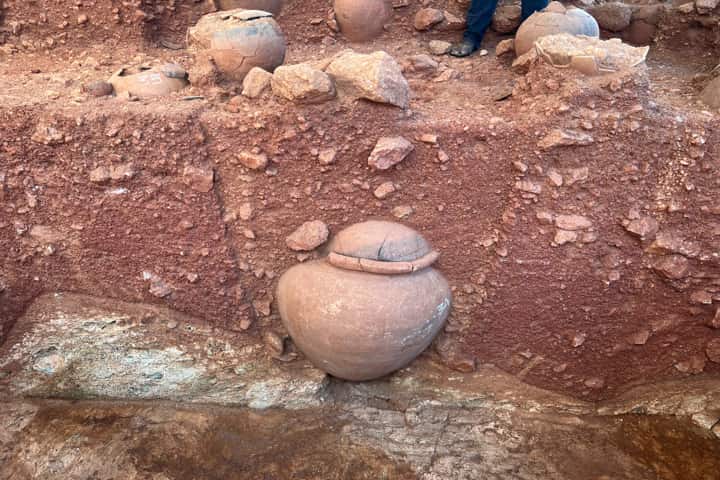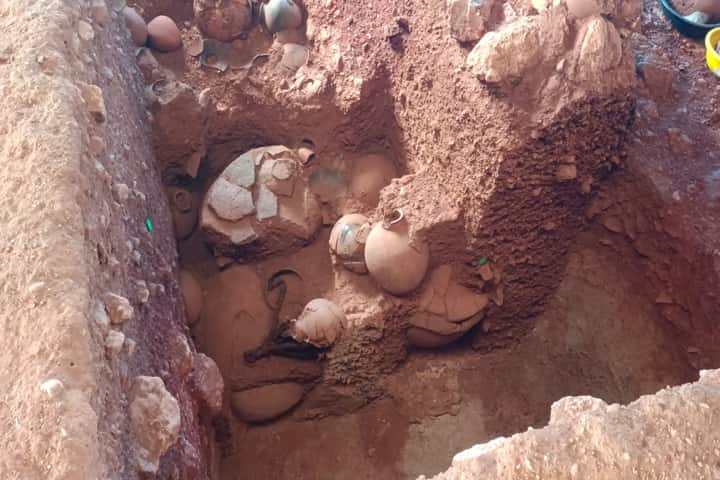Preparations are in full swing at the on-site museum at Adichanallur, an archaeological site located in Tamil Nadu’s Thoothukudi district. The museum will be inaugurated by Nirmala Sitaraman, the Union Finance Minister, on August 5.
The on-site museum is being developed by the Archaeological Survey India and it will have ancient antiquities and urn burials in in-situ position. Apart from this, the Finance Minister will also lay the foundation stone for the construction of an ASI museum which will come up at a distance of one kilometre from the on-site museum.

Located on a hillock which is spread over 114 acres, the on-site museum which is close to the Thamirabarani river has two quadrants of trenches that are shielded by a toughened glass on the top. This will enable the visitors to walk on top of the glass and view the excavated antiquities such as artefacts, skeletons, funeral articles and ancient pottery in its in-situ position. Further the museum is covered by a shelter to protect it from vagaries of nature and weather.
While such museums are found in Europe, this is the first of its kind in India.
I’m grateful to have had the chance to explore more of #TamilNadu #India with the #ancientDNA team from MKU (and our archaeologist partners). #Adichanallur is simply awe-inspiring. Now, on to the DNA work to provide some additional perspective on these ancient people!
pic.twitter.com/ym0NXGTjva
— Kendra Sirak (@KendraSirak) February 19, 2023
In the remote village of Adichanallur, a three-tier cemetery is there which is spread over 200 acres. It is one of the oldest and largest early Iron Age cemeteries in South Asia. Digging done at the site in the past brought to light a composite culture that could provide new insights into the history of South East Asia. Between 2004 and 06, 85 human skeletons were discovered in a squatting position in clay urns that were dual-coloured and big. Some of the urns had writing in Tamili (Tamil-Brahmi) script.
Apart from skeletons of people of Tamil origin, the urns also contained remains of Australoid, East Asian, Southeast Asian and other people. Experts who studied the material found at Adichanallur said that its people belonged to more than one ethnic group, all of whom lived peacefully.
The Australoid were most probably contemporary Australian aborigines who are known to have seafaring qualities.
In yr 1986, kenneth Kennedy studied 5 skulls from adichanallur kept at egmore museum, TN. He noticed the existence of 3 major races in adichanallur excavation site – mongoloid, caucasoid, australoid. Also FORDISC analysis report showed the existence of other racial grps such as pic.twitter.com/gUKXIbC3Kc
— Doctor BK (@Doc_dharma) September 23, 2021
For carbon dating of the site, the ASI sent samples to Kalina Campus, University of Mumbai and a laboratory in Miami, Florida, US. While one of the urns was dated between 696 BC-540 BC and 791 BC-701 BC, the other is said to be from 905 BC-806 BC.
In February 2020, the Union Government had decided to establish five iconic sites with on-site museums at Rakhigarhi (Haryana), Hastinapur (Uttar Pradesh), Shivsagar (Assam), Dholavira (Gujarat) and Adichanallur (Tamil Nadu). Among these Adichanallur site is the first to be inaugurated.





















